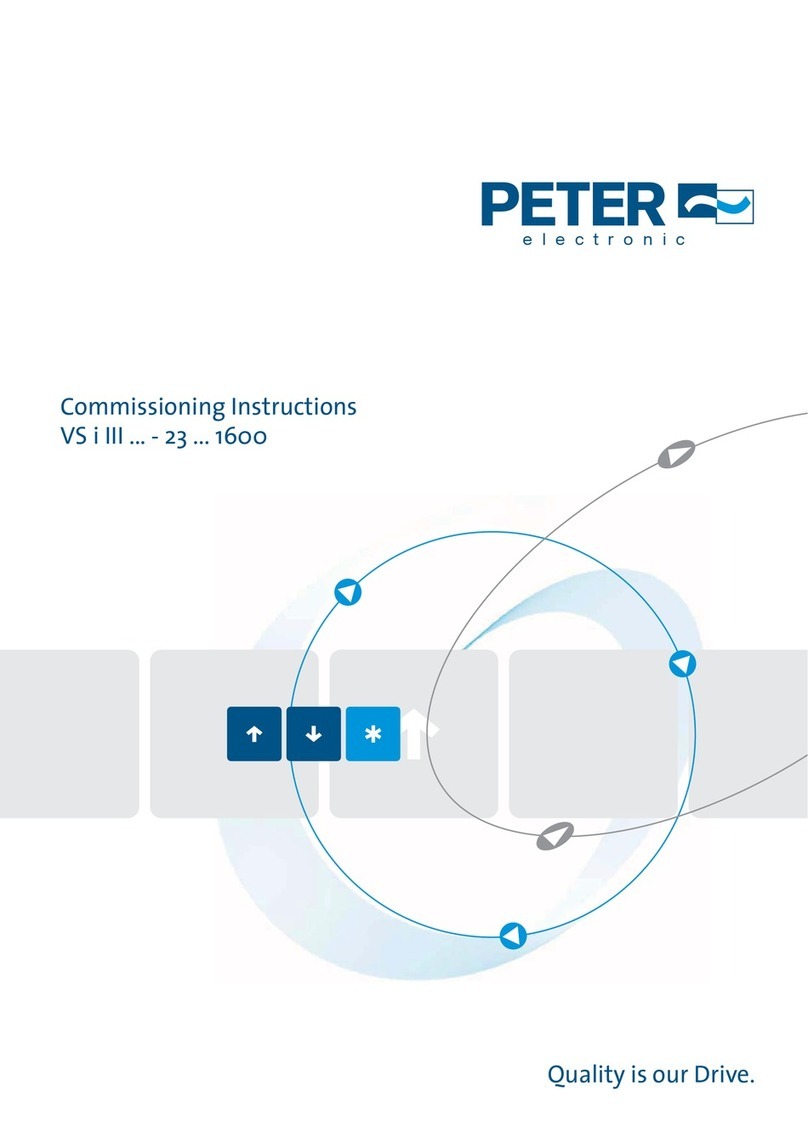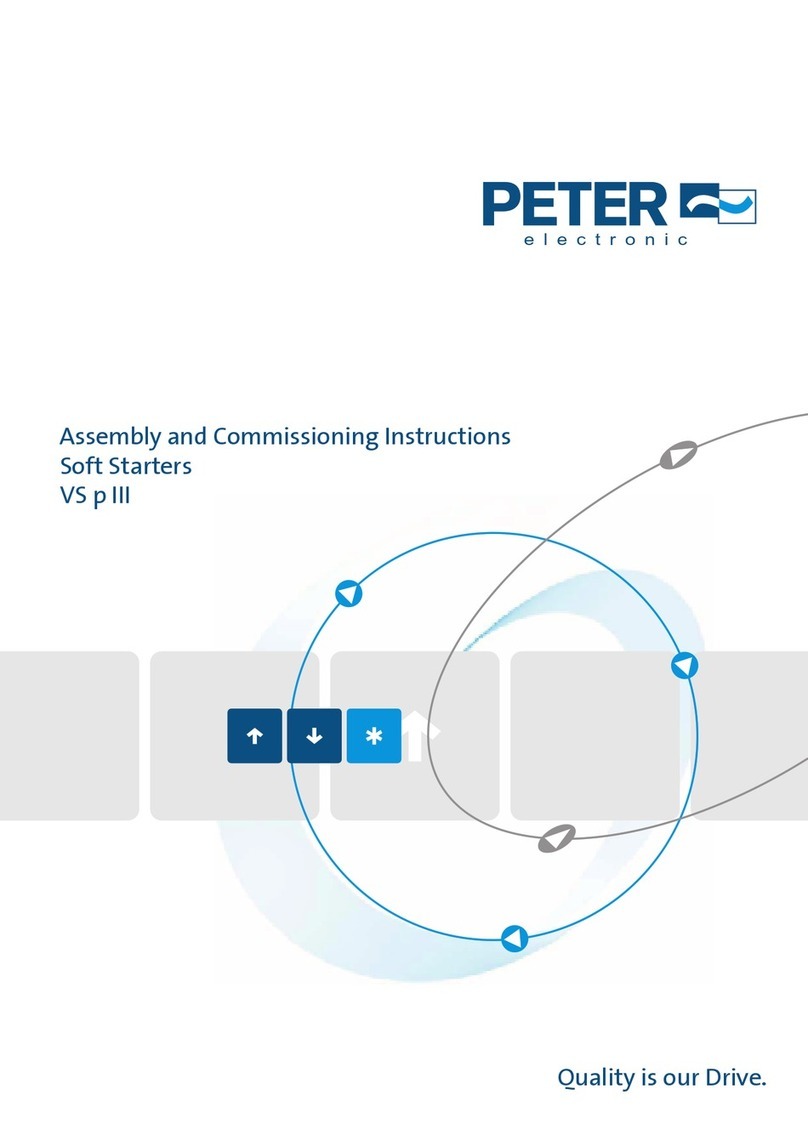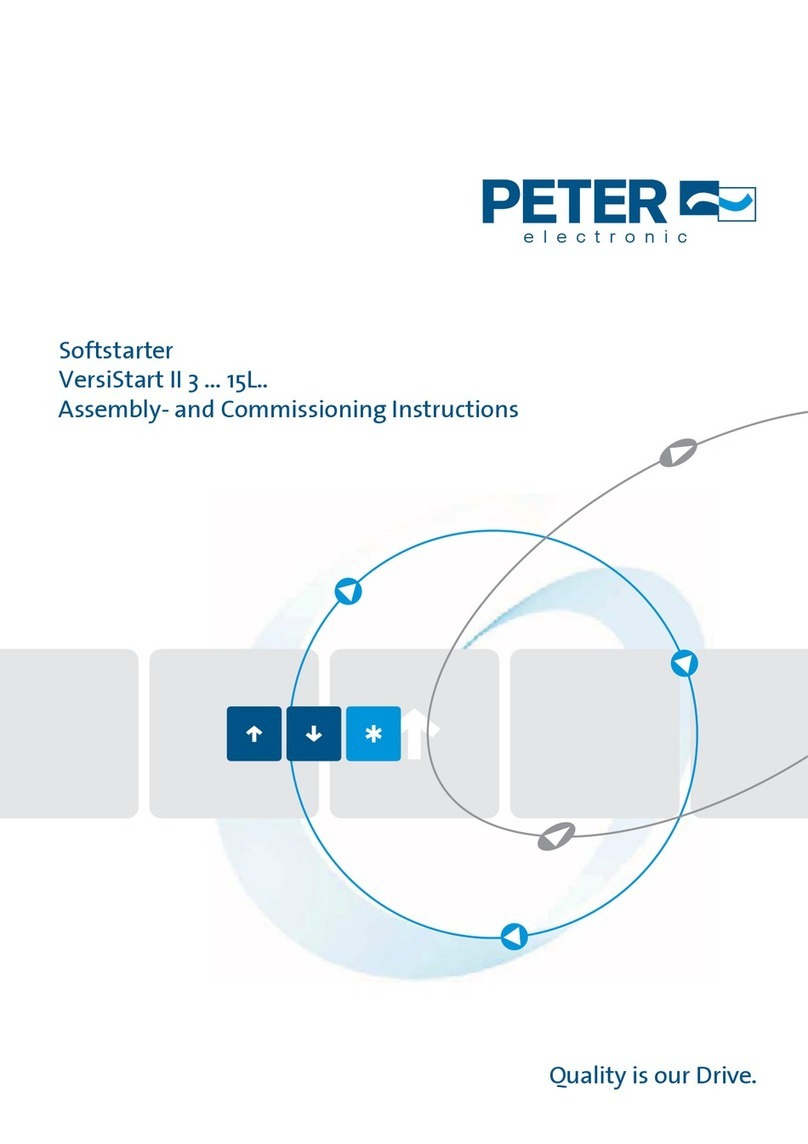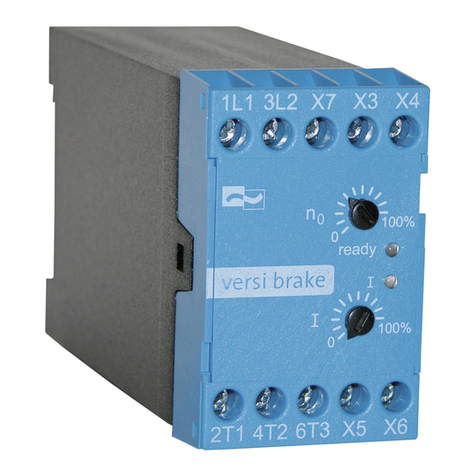
2 VersiStart i II
1. Caution Statements
Caution Statements cannot cover every potential cause of equipment damage but can highlight common
causes of damage. It is the installer's responsibility to read and understand all instructions in this manual prior
to installing, operating or maintaining the equipment, to follow good electrical practice including applying
appropriate personal protective equipment and to seek advice before operating this equipment in a manner
other than as described in this manual.
•Isolate the VersiStart i II completely from the power supply before attempting any work on the
VersiStart i II or motor.
•Cables to the control inputs must be segregated from mains voltage and motor cabling.
•Some electronic contactor coils are not suitable for direct switching with PCB mount relays. Consult
the contactor manufacturer/supplier to confirm suitability.
•Do not apply incorrect voltages to the control input terminals.
•Power factor correction capacitors must be connected to the supply side of the soft starter. Connecting
static power factor correction to the output side will damage the soft starter.
The examples and diagrams in this manual are included solely for illustrative purposes. The information
contained in this manual is subject to change at any time and without prior notice. In no event will responsibility
or liability be accepted for direct, indirect or consequential damages resulting from the use or application of this
equipment.
WARNING - ELECTRICAL SHOCK HAZARD
The VersiStart i II contains dangerous voltages when connected to mains voltage. Only a qualified
electrician should carry out the electrical installation. Improper installation of the motor or the
VersiStart i II may cause equipment failure, serious injury or death. Follow this manual and local
electrical safety codes.
GROUNDING AND BRANCH CIRCUIT PROTECTION
It is the responsibility of the user or person installing the VersiStart i II to provide proper grounding and
branch circuit protection according to local electrical safety codes.
The VersiStart i II is not short circuit proof. After severe overload or short circuit, the operation of the
VersiStart i II should be fully tested by an authorised service agent.
1.1 Avertissements à l'attention des clients canadiens
L'icône AVERTISSEMENT ci-contre signale les informations concernant des risques pouvant
entraîner des blessures graves, voire mortelles. Pour votre sécurité, veuillez consulter les
avertissements sur cette page ou demander une copie du présent manuel en français auprès de votre
distributeur local.
Isoler complètement le VersiStart i II de l'alimentation secteur avant de tenter toute intervention sur le
VersiStart i II ou sur le moteur. Les bornes de commande peuvent être au potentiel de la tension de
phase.
AVERTISSEMENT - DANGER D'ÉLECTROCUTION
Le VersiStart i II contient des tensions dangereuses lorsqu'il est raccordé à l'alimentation secteur.
Seul un électricien compétent peut effectuer l'installation électrique. Une mauvaise installation du
moteur ou du VersiStart i II peut déclencher une panne d'équipement, provoquer de graves blessures
ou même la mort. Suivre les instructions de ce manuel et des codes locaux concernant la sécurité
électrique.
Toujours appliquer la tension de commande avant (ou en même temps que) la tension secteur.

































